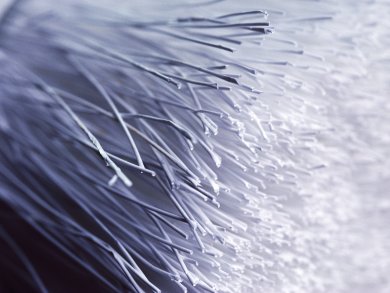1D coordination polymers are interesting for their potential in electronics, optics, magnetic devices, drug delivery and sensors. However, making nanoscale fibers is difficult. Now, researchers in Spain have turned to so-called lab-on-a-chip, or microfluidic, technology to assist.
The smaller scale of reactions in such devices allows the chemists to exploit laminar flow for control and to accelerate the synthesis. The team has demonstrated proof of principle by using microfluidic devices to produce silver and copper coordination polymers of the amino acids aspartate and cysteine, and zinc coordination polymers of bipyridine.
- Coordination Polymer Nanofibers Generated by Microfluidic Synthesis
J.Puigmart-Luis, M. Rubio-Martnez, U. Hartfelder, I. Imaz, D. Maspoch, P. S. Dittrich,
J. Am. Chem. Soc. 2011.
DOI: 10.1021/ja110834j




